Curious Questions: Why do we all love tortoises?
With a taste for radio and raspberries and a habit of clambering over anything in their path, tortoises are never going to be the cuddliest of pets, but they are nonetheless treasured by successive generations. Madeleine Silver investigates.
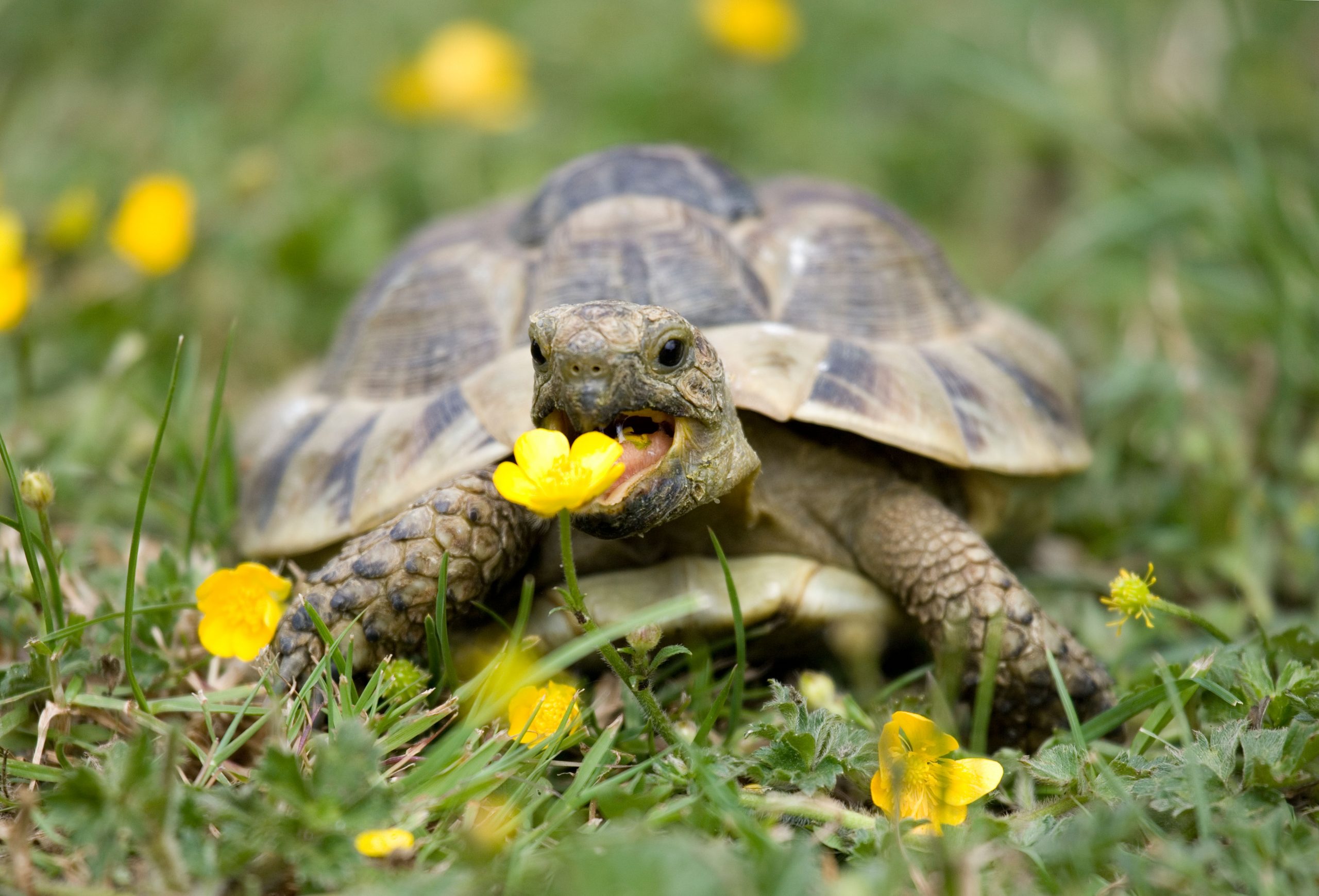

On long summer days, Mark Blathwayt remembers his childhood tortoises’ faces appearing at the kitchen door. Lured by the sound of the Test match, there was often evidence of a trip to the raspberry canes lingering around Duffer and Daisy’s mouths. ‘Where the radio was, we were and, where we were, there might be a dandelion flower, a bit of tomato or a strawberry,’ says Mr Blathwayt, who took the tortoises with him to Somerset in the 1970s, after he got married. By the time the sweet-toothed pair died as nonagenarians, they had been a mainstay of his four children’s childhoods, too.
‘It’s not a short-term project, having a tortoise,’ admits Heather Alston, alluding to a life expectancy that exceeds a century for the creatures that roam her West London garden. ‘It’s quite a responsibility because they live for such a long time.’ Of course, that hasn’t stopped these docile reptiles from cropping up in an eclectic mix of homes.
Jeff and Geoff did their bit for Red Nose Day, in 2013, by running a 6½ft sponsored race — although the tortoises’ owner, Emma Freud, isn’t entirely sure which is which, so the winner wasn’t definitive. Maggie the tortoise is an important part of the Commons Speaker Sir Lindsay Hoyle’s home in Lancashire (together with his other pets, all named after prominent politicians). At the University of Oxford, the reptile is said to be the most popular college pet; Balliol’s Rosa Luxemburg, who went missing in 2003, had grazed on its garden quadrangle for 42 years.
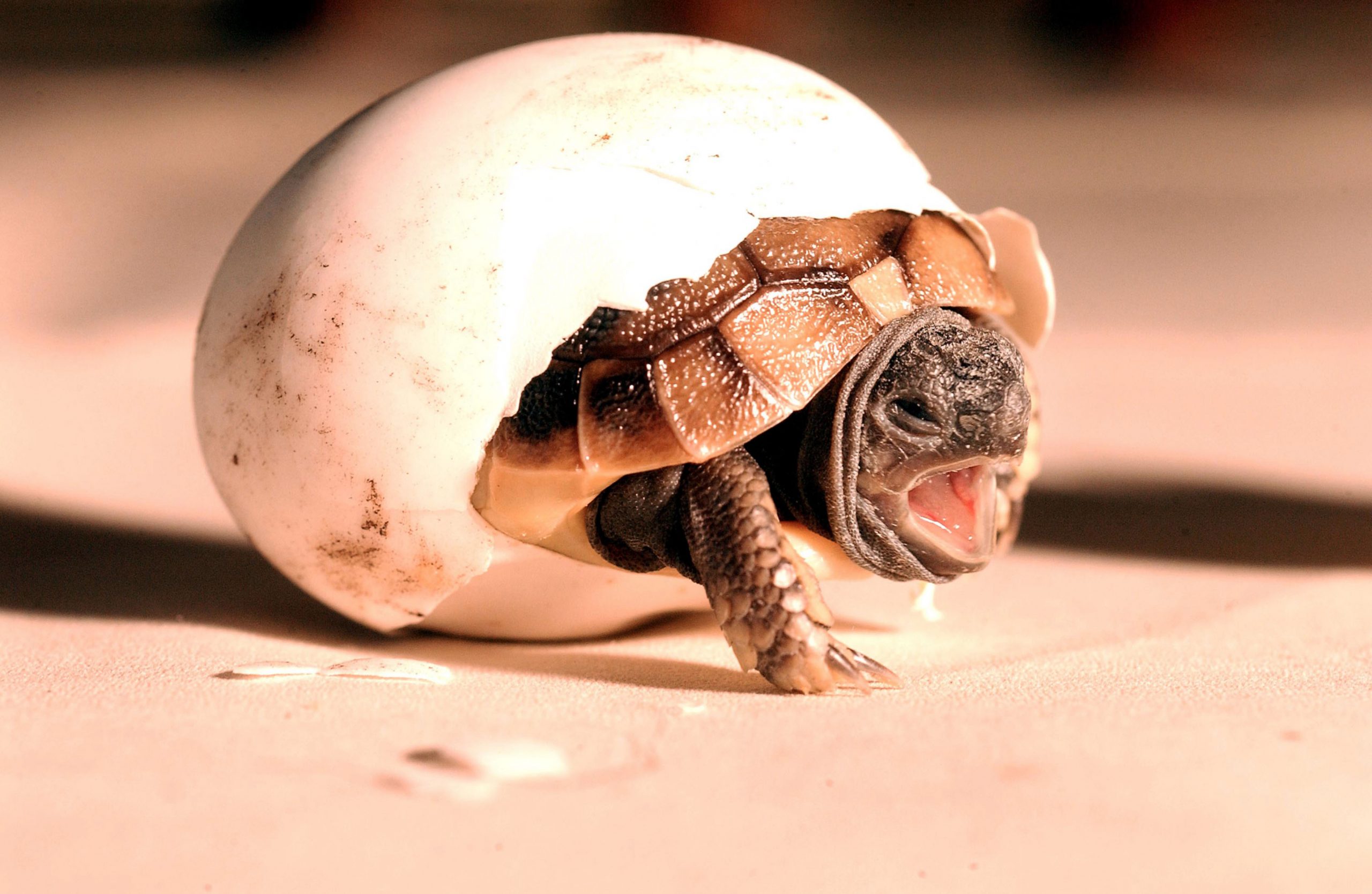
It is the animals’ ability to stir childhood nostalgia, combined with an alluring curiosity, that can prove irresistible. For Jennifer Hamilton-Baillie’s late husband, Ben, it was memories of a children’s party at his grandparents’ house in Northumberland, where tortoises were taken home in lieu of a party bag, that persuaded him to buy Mr and Mrs Tort for his own offspring.
‘His grandmother bought a lot of small tortoises and attached a string to each one,’ explains Mrs Hamilton-Baillie. ‘She let them roam the garden for a few days and, at the party, each child was given the end of a string and had to unravel it around the garden to find their tortoise.’
When Philip Godsal was growing up, his pets Alexander and Freida had a relaxed existence roaming the fruit cages — so hunting for them became a time-consuming task. Upon returning to his family’s 750-acre Iscoyd Park in Shropshire in 2009, to set up a wedding venue with his wife and children, he rediscovered his collection of model tortoises and gave it to his eldest daughter. Poppy, now 14, was enthralled by it. Her father found a breeder and Poppy’s sixth-birthday present was a pair named after the estate’s first wedding couple, Hannah and Doug.
‘For my daughter, who is very artistic and has a great imagination, they represent some otherworldly species,’ Mr Godsal believes. ‘She can watch them for hours.’
Sign up for the Country Life Newsletter
Exquisite houses, the beauty of Nature, and how to get the most from your life, straight to your inbox.
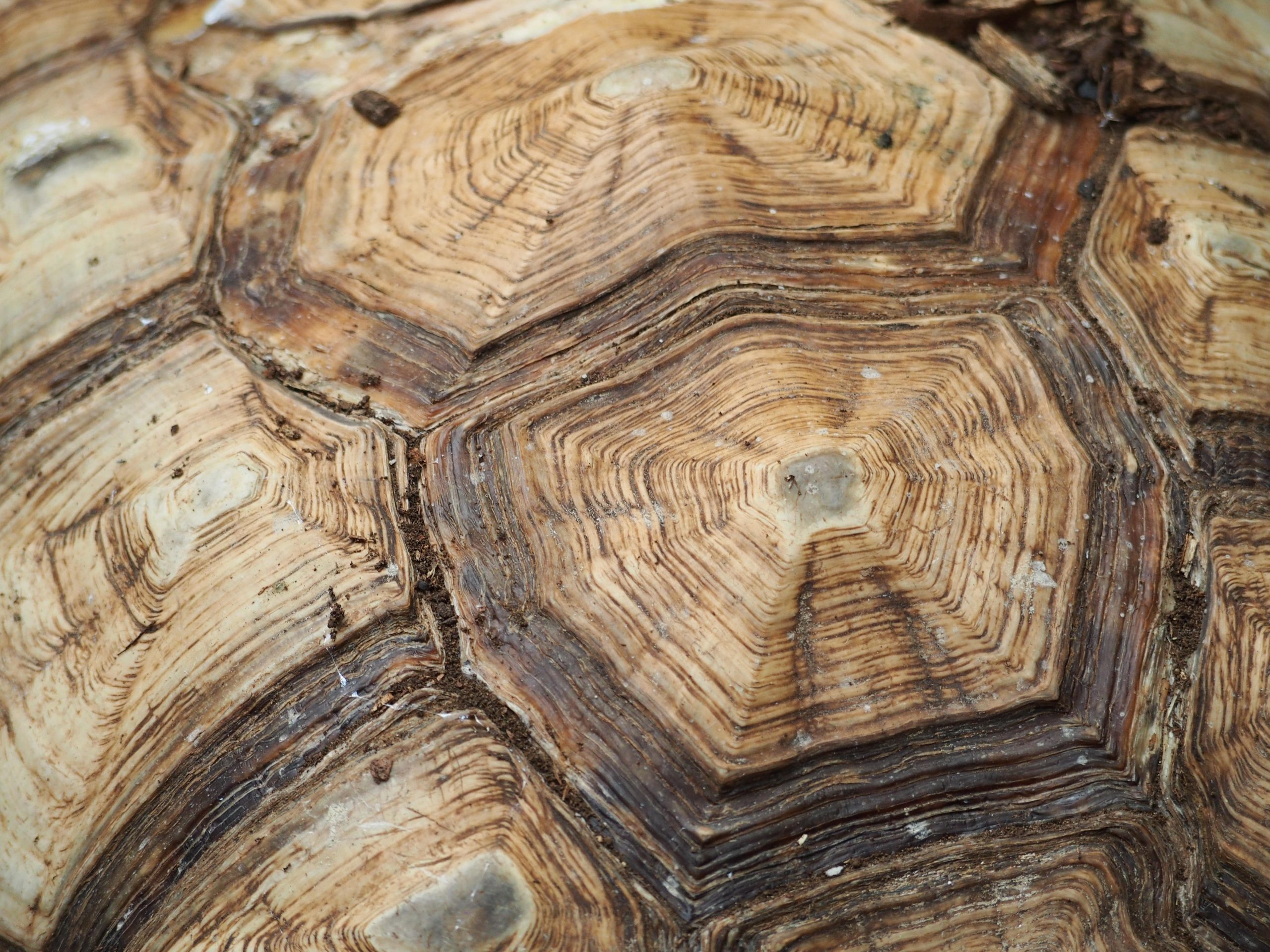
It’s not all plain sailing, however, as Mr Godsal remembers. ‘They need a lot more looking after than you think to keep them healthy in this climate, because the winters are warmer than they used to be. When I was little and there wasn’t much central heating, you could simply put them in a box with some straw to hibernate in the attic and that would be it. Now, you suddenly get a really hot day in the middle of December and they wake up. You’re constantly paranoid that they might wake up at the wrong time.’
Hibernation can be equally unnerving for Mrs Alston. ‘In about October or November, they bury themselves besides the wall in the garden and come out again in February or March. I’m always worried they haven’t gone down early enough or far enough. Then, I’m hoping they don’t come up too early.’ For their otherwise apparent ease — ‘you don’t really have to do anything with them, they just eat weeds’ — she still has a few reservations.
‘As you can imagine, they’re a bit like Two Ton Tessie, squashing anything in their way in the garden. The other thing is that they do quite a lot of mating — and because it’s shell on shell, it’s incredibly loud,’ Mrs Alston warns, although her godchildren have benefited from the abundant romance, gratefully receiving the offspring as presents (‘one or two have come back to us,’ she admits).
There are, of course, more obvious — and affectionate — pets than tortoises to be added to a family’s menagerie.
‘Anyone buying one for a child would be much better off with a rabbit or a hamster, because they like being picked up and cuddled,’ says Ann Ovenstone, who runs the Tortoise Sanctuary in the Vale of Glamorgan and was awarded an MBE for her services to Chelonia (the generic term for tortoises, turtles and terrapins) in 2001.
‘Tortoises are very independent and they don’t particularly want to socialise with a human other than when it’s feeding time.’
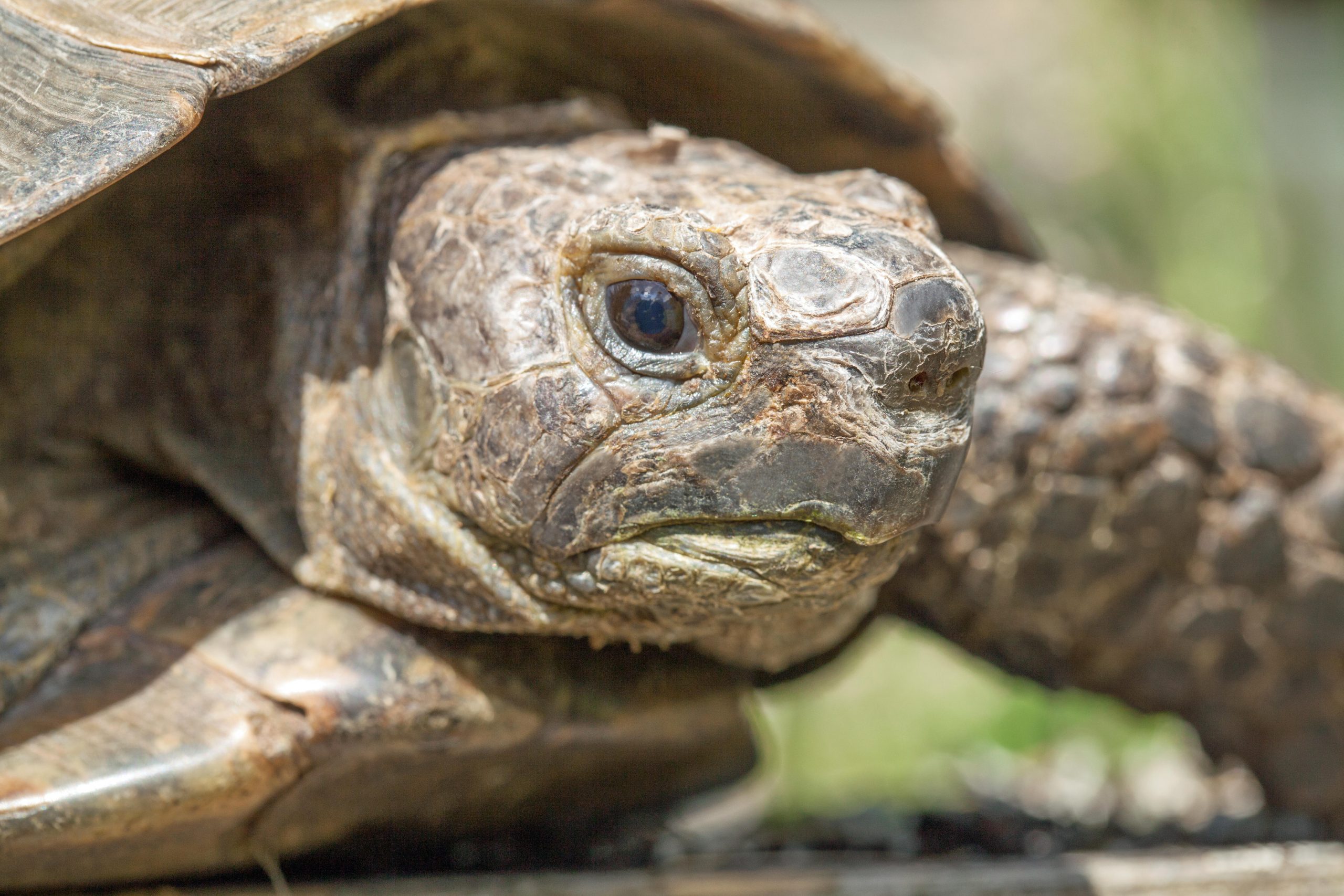
Mrs Ovenstone, who is known as the Tortoise Lady, encourages prospective owners to make contact with the sanctuary before taking the plunge, to make sure they are on the right side of the law (an import ban on wild-caught Mediterranean tortoises came into force in 1984, for example), are clear on what they’re signing up for when it comes to care and have swotted up on breeds.
At the British Chelonia Group’s weigh-in at Clifton Cathedral in Bristol, where tortoise owners descend to have their pets’ health checked before and after hibernation, a giant tortoise takes centre stage as ‘a sort of awful reminder to check what sort of tortoise you’re buying,’ warns Mrs Hamilton-Baillie, who recommends the Tortoise Trust’s website as another reliable source of information for new owners. ‘They start off looking the same as the smaller tortoises and people buy them without realising how big they’re going to get.’
For those who successfully navigate the legislation and mystifying breed names, there is a sense of community among owners, united by unpredictable hibernation patterns and the soundtrack of noisy shells. In one Wiltshire village, a growing number of young families are buying the reptiles as pets, attracted by their undemanding diet of weeds and the interest they ignite in guests of all ages.
‘Little Bedwyn is turning into a sort of tortoise empire,’ laughs Phili Wilson, who was inspired by a local friend to buy Roxy for her children for Christmas, as well as Sprout for her mother.
‘Because they’re low maintenance, you can ask friends to look after them if you go away. It’s not a big ask, unlike a dog that needs walking.’ Roxy’s (surprisingly fast) spin on the school-classroom carpet was enough to captivate a room full of five-year-olds.
It is, perhaps, the tortoise’s ability to capture the imagination that compensates for the lack of affection they offer. When Mr Godsal quizzed his son Hector on the whereabouts of their lost pet, the then two-year-old insisted it had last been seen riding on a fox’s back. Six months later, the tortoise in question came strolling across the lawn, having emerged from hibernation.
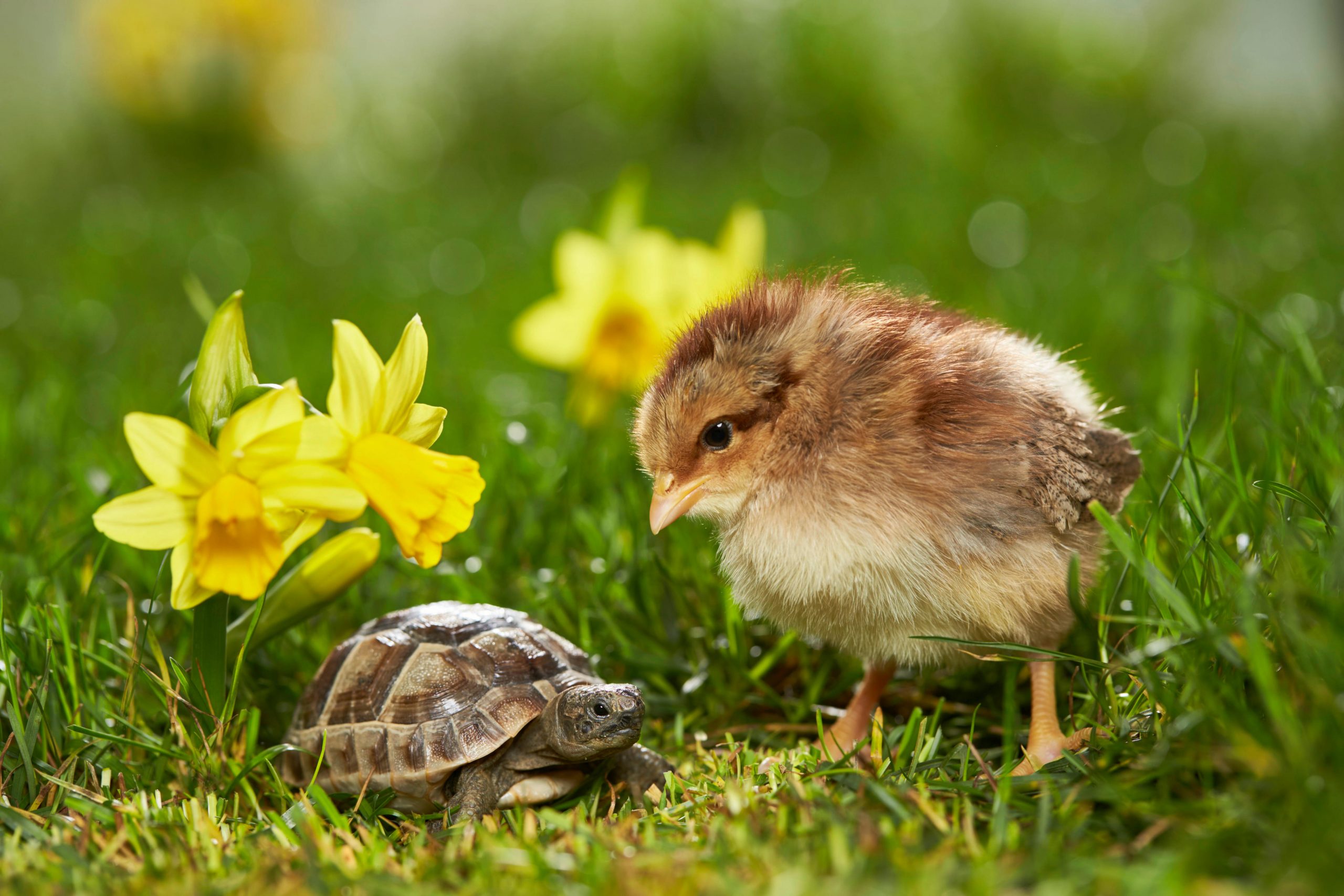
Terrific tortoise trivia
- Roald Dahl’s Alfie the tortoise — who lived on the balcony of Mrs Silver’s flat in his 1990 book Esio Trot (tortoise spelt backwards) — was inspired by one the author spotted on the balcony of his daughter’s neighbour in London.
- Each summer at the University of Oxford, the colleges’ pet tortoises battle it out in a race at the Corpus Christi College Tortoise Fair.
- Alagba, meaning elderly one, was the resident tortoise in a Nigerian palace in Oyo State. She died last year, but was said to have had at least two personal attendants to see to her every need.
- When explorer William John Bankes began transforming Kingston Lacy in Dorset into an Italian palazzo in 1835, tortoises featured heavily in his design. To ensure an accurate model could be made for the bronzes for the garden, he carried a tortoise in his bag to Paris to meet sculptor Baron Carlo Marochetti.
- The famously eccentric 2nd Baron Rothschild — who amassed a vast collection of exotic animals — rode a giant tortoise, dangling a lettuce leaf in front of it to encourage it to move.
- For 20 more facts about tortoises, turtles and terrapins, our sister website PetsRadar.com have this brilliant list.
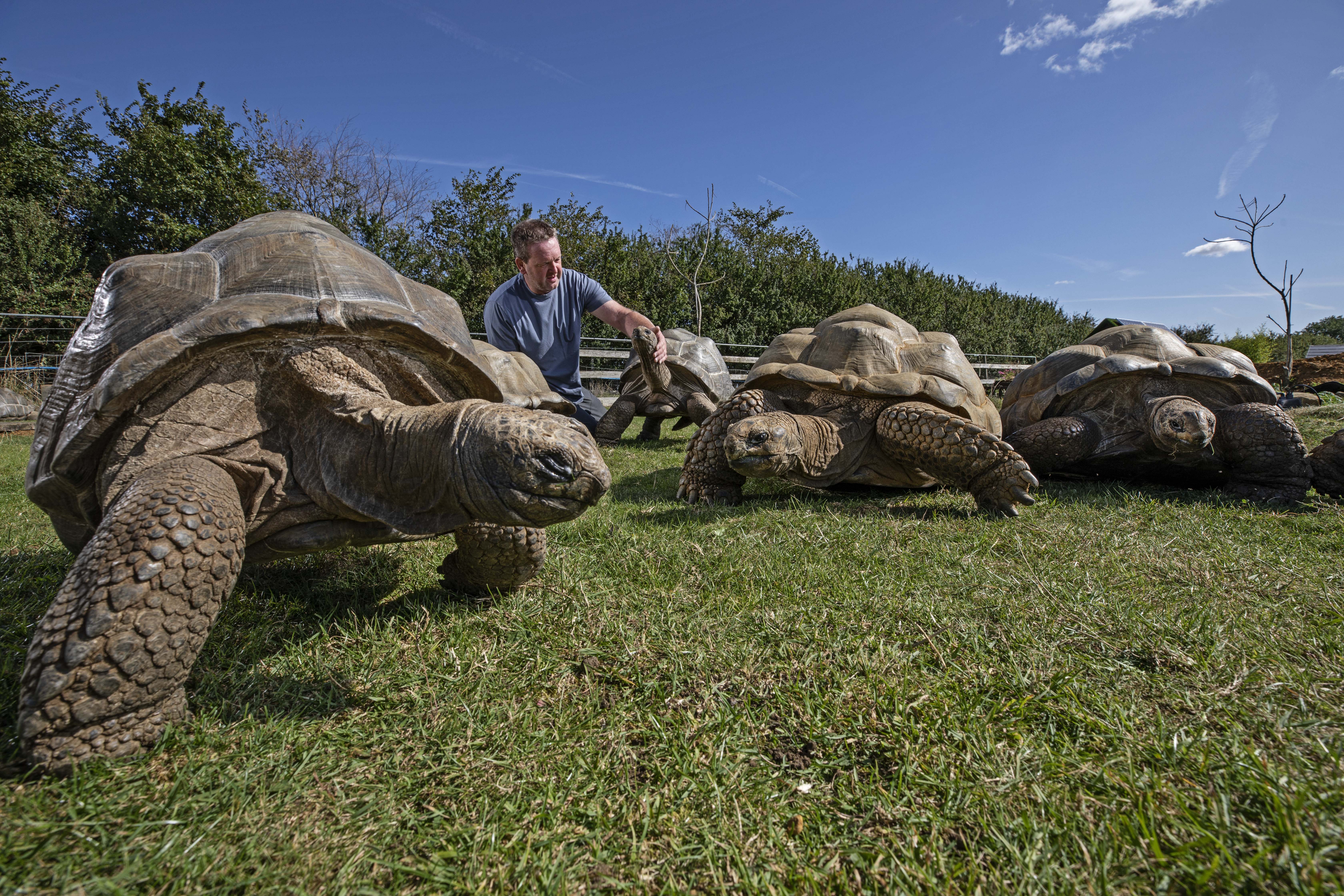
Britain's first giant tortoises: 'They’ve been around for 200 million years - we’re a blip to them'
Adrian Graham is passionate about his pets, which can live for up to 250 years and grow to the size
Country Life is unlike any other magazine: the only glossy weekly on the newsstand and the only magazine that has been guest-edited by HRH The King not once, but twice. It is a celebration of modern rural life and all its diverse joys and pleasures — that was first published in Queen Victoria's Diamond Jubilee year. Our eclectic mixture of witty and informative content — from the most up-to-date property news and commentary and a coveted glimpse inside some of the UK's best houses and gardens, to gardening, the arts and interior design, written by experts in their field — still cannot be found in print or online, anywhere else.
-
 'Monolithic, multi-layered and quite, quite magnificent. This was love at first bite': Tom Parker Bowles on his lifelong love affair with lasagne
'Monolithic, multi-layered and quite, quite magnificent. This was love at first bite': Tom Parker Bowles on his lifelong love affair with lasagneAn upwardly mobile spaghetti Bolognese, lasagne al forno, with oozing béchamel and layered meaty magnificence, is a bona fide comfort classic, declares Tom Parker Bowles.
By Tom Parker Bowles
-
 Country houses, cream teas and Baywatch: Country Life Quiz of the Day, April 24, 2025
Country houses, cream teas and Baywatch: Country Life Quiz of the Day, April 24, 2025Thursday's Quiz of the Day asks exactly how popular Baywatch became.
By Toby Keel
-
 Curious Questions: Why do golf balls have dimples? And why are tennis balls furry?
Curious Questions: Why do golf balls have dimples? And why are tennis balls furry?As the weather picks up, millions of us start thinking about dusting off our golf clubs and tennis rackets. And as he did so, Martin Fone got thinking: why aren't the balls we use for tennis and golf perfectly smooth?
By Martin Fone
-
 Curious questions: How a horse on a treadmill almost defeated a steam locomotive
Curious questions: How a horse on a treadmill almost defeated a steam locomotiveThe wonderful tale of Thomas Brandreth's Cycloped and the first steam-powered railway.
By Martin Fone
-
 You've got peemail: Why dogs sniff each other's urine
You've got peemail: Why dogs sniff each other's urineEver wondered why your dog is so fond of sniffing another’s pee? 'The urine is the carrier service, the equivalent of Outlook or Gmail,' explains Laura Parker.
By Laura Parker
-
 Curious Questions: Which person has spent the most time on TV?
Curious Questions: Which person has spent the most time on TV?Is it Elvis? Is it Queen Elizabeth II? Is it Gary Lineker? No, it's an eight-year-old girl called Carole and a terrifying clown. Here is the history of the BBC's Test Card F.
By Rob Crossan
-
 The ship that was in two different centuries, two different years, two different months, two different days and two different seasons, all at the same time
The ship that was in two different centuries, two different years, two different months, two different days and two different seasons, all at the same timeOn December 31, 1899, the SS Warrimoo may have travelled through time — but did it really happen?
By Martin Fone
-
 Curious Questions: Was music's famous 'Lady of the Nightingales' nothing more than a hoaxer?
Curious Questions: Was music's famous 'Lady of the Nightingales' nothing more than a hoaxer?Beatrice Harrison, aka ‘The Lady of the Nightingales’, charmed King and country with her garden duets alongside the nightingales singing in a Surrey garden. One hundred years later, Julian Lloyd Webber examines whether her performances were fact or fiction.
By Julian Lloyd Webber
-
 Curious Questions: Who wrote the Happy Birthday song?
Curious Questions: Who wrote the Happy Birthday song?There are few things less pleasurable than a tuneless public rendition of Happy Birthday To You, says Rob Crossan, a century after the little ditty came into being
By Rob Crossan
-
 Why do we get so many April showers?
Why do we get so many April showers?It's the time of year when a torrential downpour can come and go in minutes — or drench one side of the street while leaving the other side dry. It's all to the good for growing, says Lia Leendertz as she takes a look at the weather of April.
By Lia Leendertz